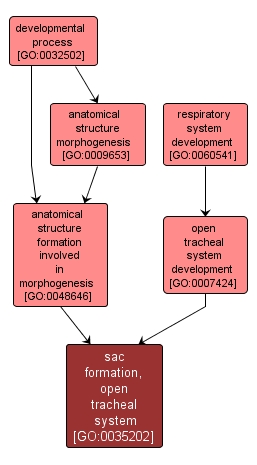GO TERM SUMMARY
|
| Name: |
sac formation, open tracheal system |
| Acc: |
GO:0035202 |
| Aspect: |
Biological Process |
| Desc: |
Formation of the tracheal sacs, the first tube-like structures to form in the open tracheal system. Once cells are determined to their tracheal cell fate, the tracheal sacs arise by invagination of each ectodermal cluster of tracheal placode cells, between 5 and 7 hours after egg laying. An example of this is found in Drosophila melanogaster. |
Synonyms:
- tracheal placode invagination
- tracheal sac formation
|
|

|
INTERACTIVE GO GRAPH
|














